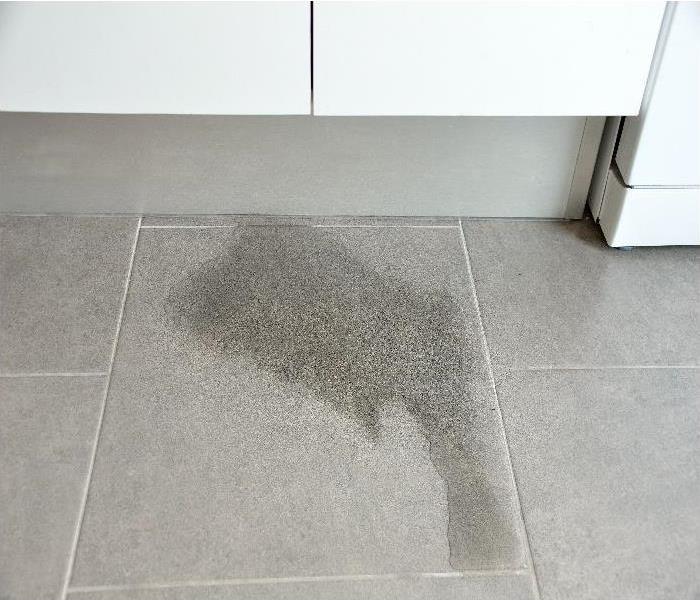I Fear Water Is Hidden Inside Walls and Ceilings of My Tallahassee House -- Who Can Help and How Is the Water Removed?
8/6/2020 (Permalink)
 Give us a call at (850) 536-6599 to explore the opportunities we offer to make it “Like it never even happened.”
Give us a call at (850) 536-6599 to explore the opportunities we offer to make it “Like it never even happened.”
Countless Cavities Capable of Collecting Leaking Water Exist In Every Residence in Tallahassee, Why SERVPRO Prepares for Water Removal Scenarios That Can Be Challenging
Water can quietly and slowly damage the structures and fixtures of your Tallahassee home, often without realizing there is a problem. A minor leak in a pipe or a poorly sealed connection can seep or drip water for days, weeks, or longer. The building materials near the leaking absorbs moisture, perhaps drying out periodically at the inception of the leaking. Eventually, the materials cannot manage the moisture load and are always damp. The silent leaking then finds its voice, signaling the problem in ways you might not read correctly, but that water removal professionals recognize. Determining where the water has found shelter before removal is difficult, why you need a reliable recovery company.
What Are Some Signs of Hidden Leaks?
One hint that your Tallahassee home needs water removal can come in the mail. If you note that your water bill shows an unexpected increase, it could mean a leak is active. Tip-offs more directly related building materials in your home include:
• Blistered paint on walls or ceilings
• Stains on surfaces unrelated to other soiling
• Peeling wallpaper
• Bulges on walls or ceilings
• "Sweating walls"
• Cracks on walls
• Squeaking floors
• Spongy feeling floors
• Unusual musty odors
• Visible mold growth
How Can a Restoration Company Help Interpret the Signs Before Water Removal?
Your honesty in sharing information about the confusing things you see in your house is why SERVPRO can start to narrow down the location of the water loss. We listen because no one knows your home better than you do. Then our crews use the tools described, and the skills learned during the Institute of Inspection Cleaning and Restoration Certification (IICRC) training to determine the extent and severity of the water incursion. This data allows the development of a best practices-based plan to remove the water and dry out the space:
Detection and Monitoring Devices
Moisture Sensors
Sensors have probes that detect the presence of moisture and must be calibrated for the materials tested
Moisture Meters
Meters measure the current moisture content of structural materials
Penetrating moisture meters can check the moisture levels within building cavities and underneath wood flooring
Metering of unaffected materials in a different space in the house help during the active drying phase, providing a comparison goal as the moisture in the damaged materials reduces
Thermo-hygrometer
This tool measures temperature and relative humidity -- we use it during drying to ensure the proper balance is struck to facilitate evaporation of water locked into structures
How Do We Move from Detection to Water Removal?
Once we know where the water lurks, the next task is to decide how to evacuate it. Different strategies work for different scenarios. Sometimes a reasonably non-disruptive approach can release the trapped water, like when a toe kick beneath a kitchen cabinet pries out to allow access. Other times our crew might need to employ different techniques to reach the water for release, including limited, controlled demolition:
• Weep holes -- punched through the ceiling when water is overhead. The safest way to accomplish this water release is to start by a wall and let the water drain entirely through one hole before another is punched closer to the middle of the room. This avoids the trapped water from pouring through in uncontrollable quantities.
• Holes cut or drilled at the baseboard level of a wall -- reduce the pressure of the water trapped gradually. The holes also allow for the insertion of hoses connected to a negative air pressure to suction out the water below the drilled opening.
• Flood cuts -- if the drywall has crumbled, sawing several inches above the water line removes materials that cannot be saved and permits the water to be extracted.
Is Water Extraction Enough?
Although water extraction is critical to getting wet building cavities back to preloss condition, it is also necessary to dry the still-wet porous materials to normal moisture levels. The limited demolition used to extract the hidden water enhances structural drying efforts by opening the spaces to air movement and the dehumidifiers' effect.
Water removal can be a tricky business in your home, why SERVPRO of North Leon County seeks out and enrolls our team members in advanced training developed by the IICRC. Give us a call at (850) 536-6599 to explore the opportunities we offer to make it “Like it never even happened.”





 24/7 Emergency Service
24/7 Emergency Service